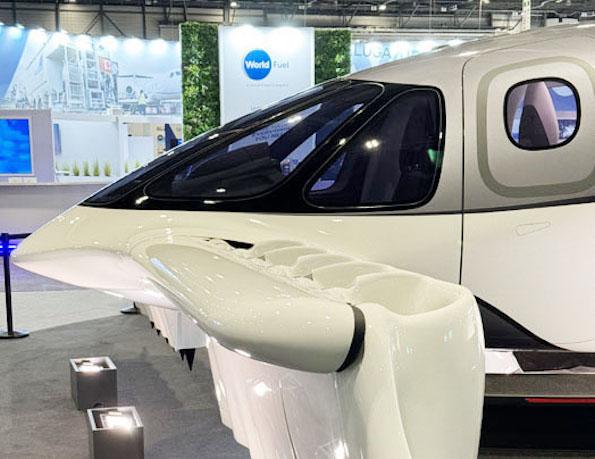
"By 2035 when we expect 40,000 eVTOLs to be flying around the world, the vast majority of those will be for regional mobility, not urban,” Lilium Chief Commercial Officer SebastienBorel said. “So we’re very happy to be in that space."
GENEVA—Advanced air mobility startups attending the European Business Aviation Conference and Exhibition here are expressing a common theme: Regional air mobility presents a market opportunity superior to urban air mobility.
While investor attention has largely focused on urban air mobility (UAM) and electric vertical-takeoff-and-landing (eVTOL) vehicles, including well-capitalized startups like Archer and Joby Aviation, the near-term UAM market will take time to mature and scale, with a range of hard-to-solve obstacles including infrastructure, regulations and community acceptance.
Regional air mobility (RAM), by contrast, already enjoys a large addressable market today, with existing infrastructure and regulations. And by lowering operating costs through electric and hybrid propulsion, RAM startups believe they can stimulate new point-to-point demand at underserved airports and airfields, improving the convenience of regional travel while potentially decarbonizing a considerable portion of commercial air traffic.
“I don’t understand how you could possibly just base your business model around UAM simply because of the acceptance, safety cases and most importantly, the vertiports,” Lilium’s Chief Commercial Officer Sebastien Borel told Aviation Week on the sidelines of EBACE 2024. “If you look at Los Angeles, New York, the places where everyone is talking about launching service, it’s going to be extremely challenging to find sites there for a reasonable price.
“On top of that, when we look at demand, by 2035 when we expect 40,000 eVTOLs to be flying around the world, the vast majority of those will be for regional mobility, not urban,” Borel said. “So we’re very happy to be in that space, because it’s the biggest market and it creates a lot less risk with regard to entry into service in terms of airspace, public acceptance, safety, etc.”
Ivor Van Dartel, founder and CEO of Vaeridion, a German startup developing a nine-seat battery-electric airplane, said his company chose not to pursue UAM because of concerns about high regulatory and certification barriers.
“With eVTOLs and UAM, we see major regulatory hurdles, and building an electric airplane certified under [the European Union Aviation Safety Agency’s] CS-23 allows us a much shorter path to market,” Van Dartel said. “Our airplane ultimately is much less novel than an eVTOL and easier to certify, and we obviously don’t require special vertiports or anything like that—just charging stations, which can be off-the-shelf.”
Robin Riedel, a partner with McKinsey & Co., observed that while eVTOLs and UAM have captured the bulk of investor excitement to date related to AAM, regional air mobility offers a more incremental step change in technology, which should smooth its path to adoption.
“With UAM, everything is brand new; the electric powertrain, the aircraft configuration, a whole new use case,” Riedel said. “Regional is more incremental, using existing runways and flying airplanes that are closer to what we already fly today. . . . Whether it’s certification of aircraft, certification of operations or bringing customers in, it’s going to be less of a heavy lift than UAM.”
Additionally, Riedel is skeptical about the promised time-savings of UAM—a key selling point of air taxis compared to ground vehicles.
“Let’s assume a 40-min. urban trip can be done in 20 min. by air taxi,” he said. “Then you factor in the drive to the vertiport, getting through the vertiport, boarding the aircraft, disembarking and getting a ride on the other side. How smooth is that going to be, really?
“By comparison, you’re going to see a much greater benefit when you take a regional flight that’s 100 or 150 mi. or so, where the alternative would be a 2-3 -hr. drive,” Riedel says. “So in terms of flight time, hassle time, I think regional is going to be able to more easily deliver a larger benefit to more people.”
